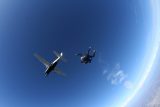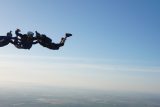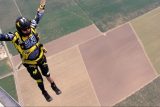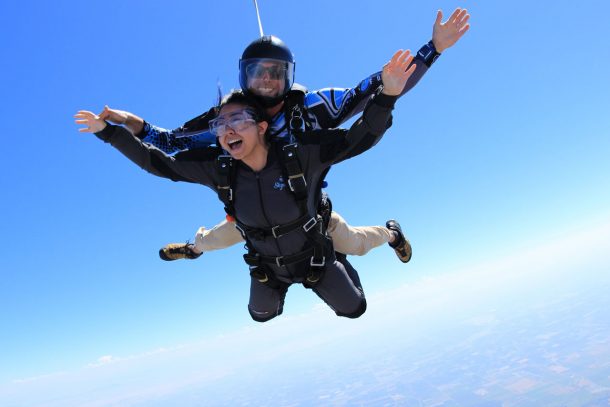How do Parachutes Work?
The parachute: a primary skydiving staple. Ever wonder about the science behind parachutes, or about how parachutes work? Well, parachutes have a more prominent place in human history than many would think. Long before we took to the skies in man-made metal birds, men were contemplating ways to safely carry a body from sky to ground. Few know, even the famed Renaissance polymath Leonardo da Vinci dedicated time to understanding the science behind parachutes. Ultimately, DaVinci is the named inventor of the parachute. Admittedly, parachutes today are a far cry from when Leonardo first put quill to paper. That said, we contend the science behind parachutes today is equally as captivating as those first medieval sketches.
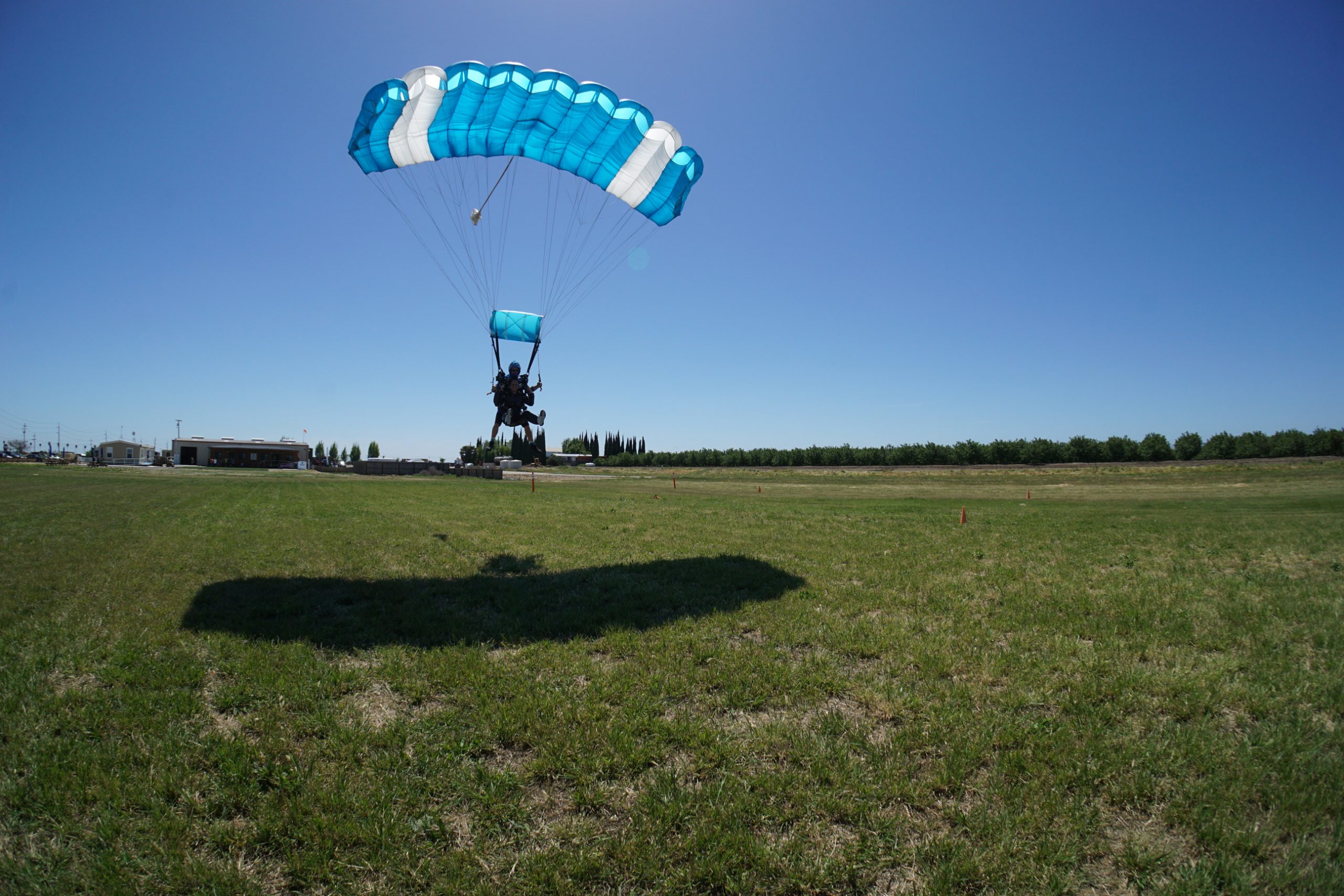
The Science Behind Parachutes
The field of parachute design is ever-evolving, and parachutes have come a long way since skydiving’s inception. So how do parachutes work? Parachutes are more than a bundle of pretty fabric and haphazard stitches. Indeed, parachutes today are a fine-tuned, meticulous design. They rely on air resistance to perform uniformly.
How does a parachute work?
Parachutes utilize the principal of terminal velocity. Most parachutes are designed to descend more slowly by dramatically increasing your aerodynamic drag or air resistance. Thus, significantly lowering your terminal velocity. The result of the aforementioned is a significant amount of drag and the ability for the canopy pilot (the one attached to the parachute) to land at a reasonable, safe speed.
Early Parachutes
Parachutes were initially designed to deliver cargo and personnel behind enemy lines. What could vaguely be considered a “modern” parachute didn’t come to be until the late ’50s and ’60s. As sport parachuting was gaining traction, nearly all parachutes being used for civilian jump operations were surplus military equipment. These parachutes were a round, dome design. Few, if you were lucky enough to get your hands on them, were coated in a special chemical composite that rendered them Low-Porosity. This means the fabric of these parachutes would allow less air to pass through them, and thus, reduce the rate of descent.
The other benefit of this specially coated fabric was that they were capable of withstanding the natural damage incurred from the parachute opening at terminal velocity. You see, in the early days, it was quite common for parachutes to sustain damage during the opening sequence. It wasn’t unheard of for a main parachute to shred from the sheer force of deployment!
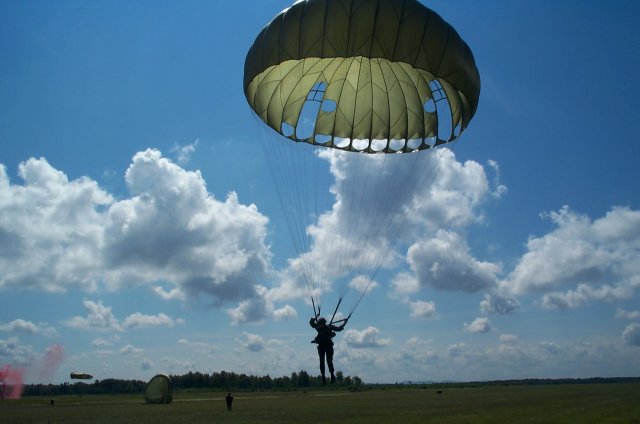
Additionally, in the early days, with a round parachute design, canopy pilots were entirely at the mercy of the wind. Eventually, in the ’60s and ’70s, manufacturers tried to make these round parachutes “steerable”. However, “steerable” is debatable, and they were a long way from being maneuverable.
Modern Parachutes
How parachutes work today is based on a primary design change. Rather than a round or dome-shaped parachute, the first and foremost feature of a modern parachute design is a RAM air structure. Today, Parachutes have a series of tubular cells that inflate as air is forced into each chamber.
As we mentioned, early parachute openings were pretty rough. Thankfully, parachute openings today are much less aggressive. So much so, you may not even notice the parachute opening! One minute you are freefalling with your belly to earth, plummeting lickety-split at 120 miles per hour, the next you are sitting up, suspended beneath a fully inflated parachute.
Another benefit of how parachutes work today is an increased amount canopy pilot control. Now, more so than ever, the skydiver rather than the wind, dictates where the canopy will land.
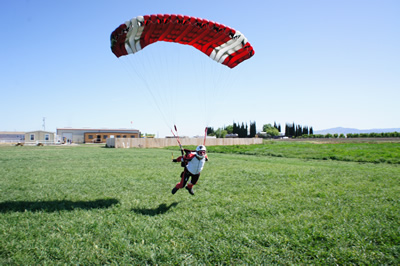
How does steering a parachute work?
A series of lines connected to the back of the parachute cascade down and eventually coalesce into correlating connection points on each respective side of the jumper. A jumper can control these lines using a handle at the bottom of the line, called a toggle. This allows individuals to steer the parachute to the ground. By pulling on the right or left steering handle (the toggle) a jumper can cause the right or left corner of the parachute to fold down, creating drag, and turning the parachute to the right or left.
In the past, the parachutist had a rough landing. Today, when it is time to land, a jumper will pull both steering handles down uniformly to pull the backside of the parachute down to slow the skydiver to a safe landing speed.
Don’t take our word for it, steer yourself down to Skydive California today and check out how a modern parachute works for yourself. We can’t wait to show you!

